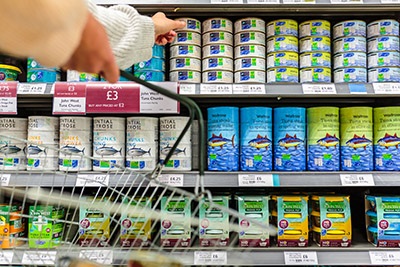Species
Cod, haddock, saithe (G. morhua, M. aeglefinus, P. virens)
Fishing methods/Gear type
Bottom trawl
Certified since 2011
Next reassessment due 2026
Tonnage
31,357 (2020)
UK Fisheries Ltd is the UK component of two MSC fishery certificates: UK Fisheries Ltd/DFFU/Doggerbank Northeast Arctic cod, haddock and saithe; and UK Fisheries/DFFU/Doggerbank Group saithe.
The first certificate was awarded to the fishery in 2012 (recertified in 2017 and again in 2022), which operates in the waters of the Northeast Arctic. It encompasses eight vessels that target cod, haddock and saithe using demersal rockhopper otter trawls (rubber balls or discs), which help to reduce the contact between the net and the seabed. There is one UK vessel (Kirkella) operating under this certificate. All of its catch is consumed in UK fish and chip shops, with a typical catch providing whitefish for 2.3 million fish suppers!
The fish are filleted, packaged and frozen onboard, with the guts, skins and heads stored separately and processed into fishmeal for use in animal feeds and as a fertiliser. Frozen product from this fishery is also landed in Germany or Iceland, destined for a global market.
The UK Fisheries/DFFU/Doggerbank Group saithe certificate was awarded to the saithe fishery in the North Sea, West of Scotland and the Norwegian Sea in 2011. Also known as pollock or coley, saithe is a fast and agile white fish in the same family as cod, known for its ability to battle the strong tidal currents of the Arctic Circle.
The certificate encompasses nine vessels – one of which is owned by UK Fisheries Ltd – that use standard demersal rockhopper otter trawl nets equipped with sorting grids to allow juvenile fish to escape. As part of its certification, the fishery also committed to developing a strategy for habitat monitoring in fishing areas and implemented a system to avoid fishing in known sensitive habitats.
The saithe fishery was recertified in 2021 and France is the main commercial market for its catch. After experiencing a decline between 2007-2011, the spawning-stock biomass of the fishery is now stable, according to a 2021 surveillance report, indicating the benefits of sustainable management and a healthy future for the species.
The ongoing commitment of these Arctic and North Atlantic fisheries to sustainable sourcing helps to keep both stocks stable and catch plentiful, fulfilling large global appetites for these popular whitefish species.
The first certificate was awarded to the fishery in 2012 (recertified in 2017 and again in 2022), which operates in the waters of the Northeast Arctic. It encompasses eight vessels that target cod, haddock and saithe using demersal rockhopper otter trawls (rubber balls or discs), which help to reduce the contact between the net and the seabed. There is one UK vessel (Kirkella) operating under this certificate. All of its catch is consumed in UK fish and chip shops, with a typical catch providing whitefish for 2.3 million fish suppers!
The fish are filleted, packaged and frozen onboard, with the guts, skins and heads stored separately and processed into fishmeal for use in animal feeds and as a fertiliser. Frozen product from this fishery is also landed in Germany or Iceland, destined for a global market.
The UK Fisheries/DFFU/Doggerbank Group saithe certificate was awarded to the saithe fishery in the North Sea, West of Scotland and the Norwegian Sea in 2011. Also known as pollock or coley, saithe is a fast and agile white fish in the same family as cod, known for its ability to battle the strong tidal currents of the Arctic Circle.
The certificate encompasses nine vessels – one of which is owned by UK Fisheries Ltd – that use standard demersal rockhopper otter trawl nets equipped with sorting grids to allow juvenile fish to escape. As part of its certification, the fishery also committed to developing a strategy for habitat monitoring in fishing areas and implemented a system to avoid fishing in known sensitive habitats.
The saithe fishery was recertified in 2021 and France is the main commercial market for its catch. After experiencing a decline between 2007-2011, the spawning-stock biomass of the fishery is now stable, according to a 2021 surveillance report, indicating the benefits of sustainable management and a healthy future for the species.
The ongoing commitment of these Arctic and North Atlantic fisheries to sustainable sourcing helps to keep both stocks stable and catch plentiful, fulfilling large global appetites for these popular whitefish species.
Gear used
The fishery uses bottom trawls. Learn more about this gear type.



.jpg?sfvrsn=582daf_0)



